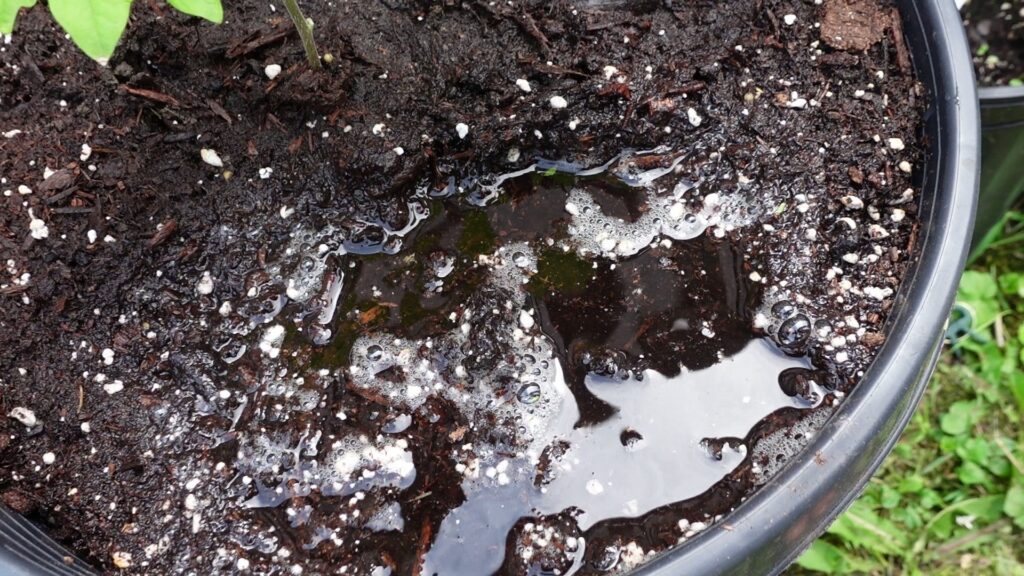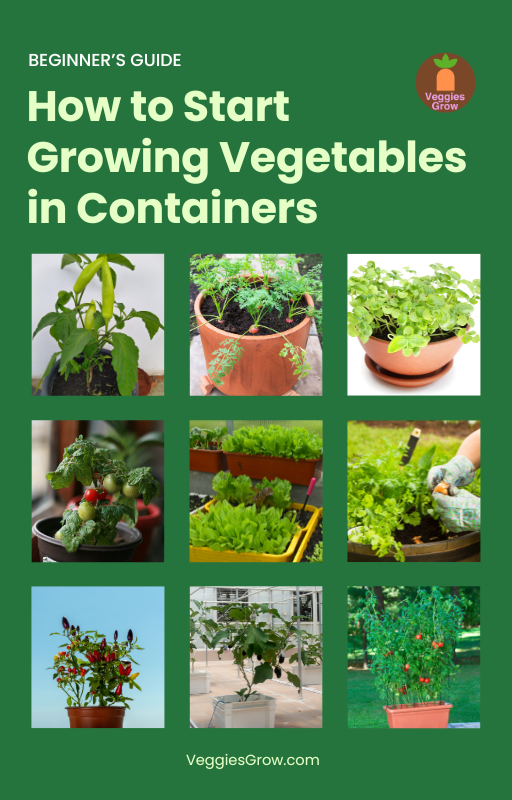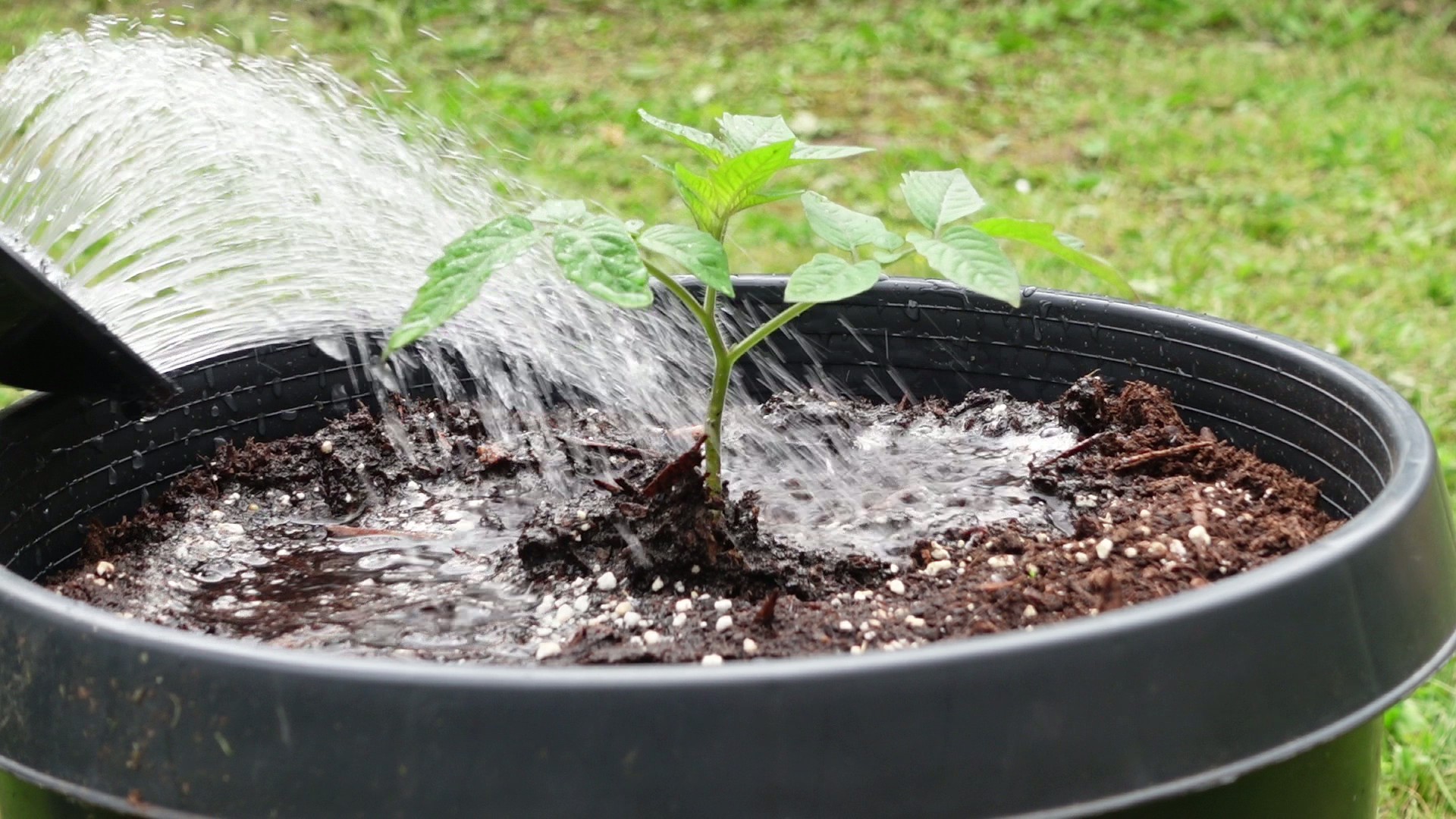Watering a container vegetable garden is quite different from watering an in-ground or raised-bed vegetable garden. This is because container-grown vegetables have to get all the water that they need from the limited amount of soil that’s in the container. This means that container-grown vegetables need to be watered much more frequently.
In this post, we will be covering how often, when, and how much water your container vegetables need, along with tips on how to maximize water usage in your container vegetable garden, and everything in between.
How often to water container vegetables?
It may come as a surprise to those who have grown vegetables directly in the ground or in raised beds that container vegetables need to be watered at least once a day. The soil in each container will usually dry out by the end of the day so that the container will almost completely lack moisture. This is a lot more frequent than once or twice a week, which is usually sufficient for other types of vegetable gardens.
If your container vegetables have been exposed to quite a bit of rain during the day, you can skip watering your containers that day. Despite this, a slight drizzle won’t make up for a day’s watering and you can water as usual.
Once the weather gets a lot hotter, you may even need to water your plant as much as twice a day so that your plants have a constant amount of moisture throughout the day. The decision whether to water just once or twice a day will depend on the type of vegetable you are growing. Vegetables like pumpkin, squash, and eggplant, which grow well in very warm conditions and don’t mind a bit of dry weather may do just fine with being watered just once a day no matter how warm it gets. On the other hand, plants like tomatoes, cucumbers, and leafy greens, which need constant moisture to stay healthy and productive will have to be watered twice a day in very warm weather.
How much water do container vegetables need?
The actual amount of water needed will depend on the size of the container, the type of vegetable, and weather conditions. In general, you should add enough water so that just a bit of water starts running out, a minute or two later.
What is the best time to water container vegetables?
The best time to water your container vegetables is early in the morning. This will allow enough time for your container vegetables to dry up enough once the sun comes up. The next best time to water is early in the afternoon. This allows for your container plants to dry up to some extent before it becomes dark. If you need to water twice a day, you can water early in the morning and then during the early afternoon.
You should avoid watering your container vegetables during mid-day when it’s the warmest and brightest because most of the water you add will evaporate, leaving not enough water for your plants to use. You should also avoid watering your plants late in the evening or during the night because the water may not fully drain, leaving your soil and plants damp during the night, which can encourage many types of diseases and pests to develop.
Tips to water your container vegetables better
- Use a watering can or or a spray bottle to water your container vegetables. This will help you evenly add water to the entire surface of your soil so that water can move through all of the soil.
- Don’t use too much force to prevent a depression is created in any specific area of the soil surface. Too much force will also cause your soil to become compacted.

- Don’t let water touch the leaves of your plants instead water the surface of the soil directly. Wet leaves can encourage diseases, especially when they don’t have time to dry out, and does not help your plants in any way.
- Place a saucer or tray under your pots to catch any soil that may leave with run-off water. This will make sure that no nutrients and soil are lost from the container. Preventing soil from collecting under your containers can also discourage ants and other insects from nesting in these damp and dark areas.
- Use containers of the correct size based on the type of vegetable that you are growing so that your plants have enough room to grow big enough roots and maximize the use of the water that you add. Recommended container sizes for different types of vegetables
- Monitor your plants regularly for signs of being underwatered or overwatered. This includes wilting of leaves, yellowing of leaves, and stunted growth. Then, change the amount of water and frequency accordingly and see if it improves.
- Mulch your container vegetables to maximise water usage. Adding mulch to the surface of your container vegetables can maximize their water usage in very warm weather and may mean that you’d need to water them less often. On the other hand, mulching can stop the soil in your containers from drying up after you water them in damp and rainy weather, so it’s best to not mulch your container vegetables unless the weather is warm and dry.
Watering your container vegetables properly is essential for healthy and productive plants. To ensure that your container vegetables have enough water, you should water them at least once a day and monitor the moisture levels regularly.
It’s important to water your plants during the early morning or early afternoon. Avoid watering during mid-day to minimize evaporation or late evening to prevent disease and pest problems. Using the right size of containers, a watering can or bottle with a small mouth, and saucers to catch run-off water can also help you water your container vegetables more efficiently. Lastly, mulching can maximize water usage, but it should only be done only in warm and dry weather conditions.
Interested in growing your own container vegetables?


